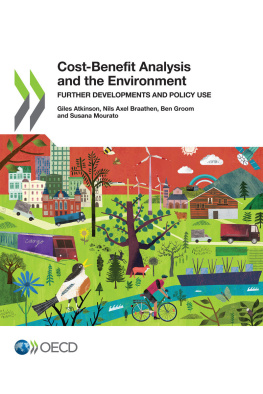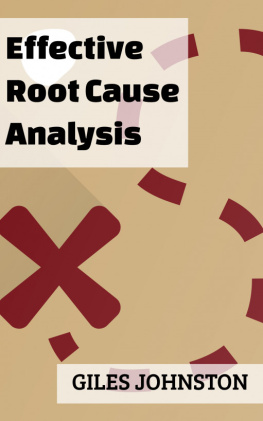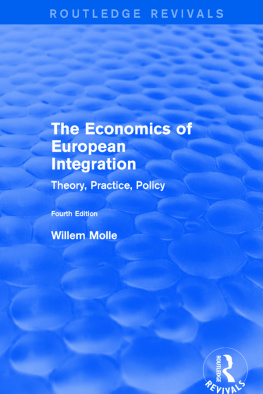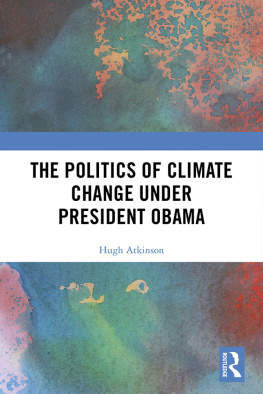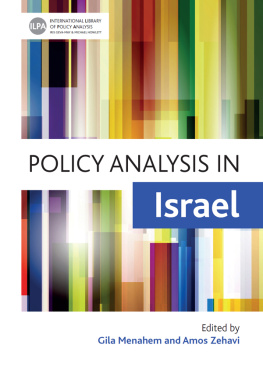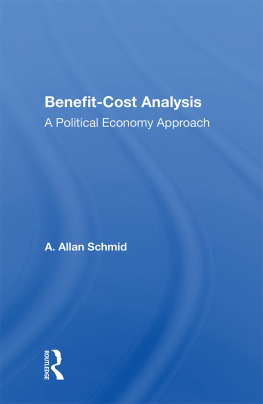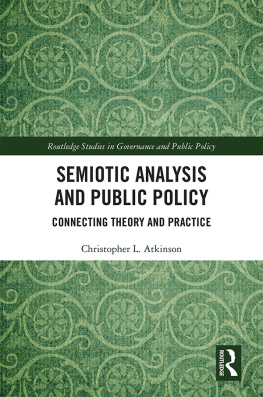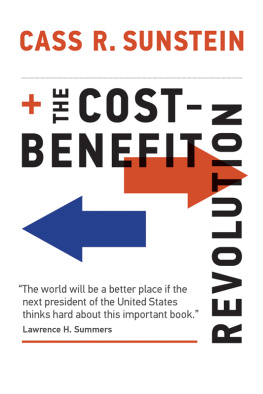Atkinson Giles - Cost-benefit analysis and the environment : further developments and policy use
Here you can read online Atkinson Giles - Cost-benefit analysis and the environment : further developments and policy use full text of the book (entire story) in english for free. Download pdf and epub, get meaning, cover and reviews about this ebook. year: 2018, genre: Romance novel. Description of the work, (preface) as well as reviews are available. Best literature library LitArk.com created for fans of good reading and offers a wide selection of genres:
Romance novel
Science fiction
Adventure
Detective
Science
History
Home and family
Prose
Art
Politics
Computer
Non-fiction
Religion
Business
Children
Humor
Choose a favorite category and find really read worthwhile books. Enjoy immersion in the world of imagination, feel the emotions of the characters or learn something new for yourself, make an fascinating discovery.
- Book:Cost-benefit analysis and the environment : further developments and policy use
- Author:
- Genre:
- Year:2018
- Rating:4 / 5
- Favourites:Add to favourites
- Your mark:
- 80
- 1
- 2
- 3
- 4
- 5
Cost-benefit analysis and the environment : further developments and policy use: summary, description and annotation
We offer to read an annotation, description, summary or preface (depends on what the author of the book "Cost-benefit analysis and the environment : further developments and policy use" wrote himself). If you haven't found the necessary information about the book — write in the comments, we will try to find it.
Atkinson Giles: author's other books
Who wrote Cost-benefit analysis and the environment : further developments and policy use? Find out the surname, the name of the author of the book and a list of all author's works by series.
Cost-benefit analysis and the environment : further developments and policy use — read online for free the complete book (whole text) full work
Below is the text of the book, divided by pages. System saving the place of the last page read, allows you to conveniently read the book "Cost-benefit analysis and the environment : further developments and policy use" online for free, without having to search again every time where you left off. Put a bookmark, and you can go to the page where you finished reading at any time.
Font size:
Interval:
Bookmark:
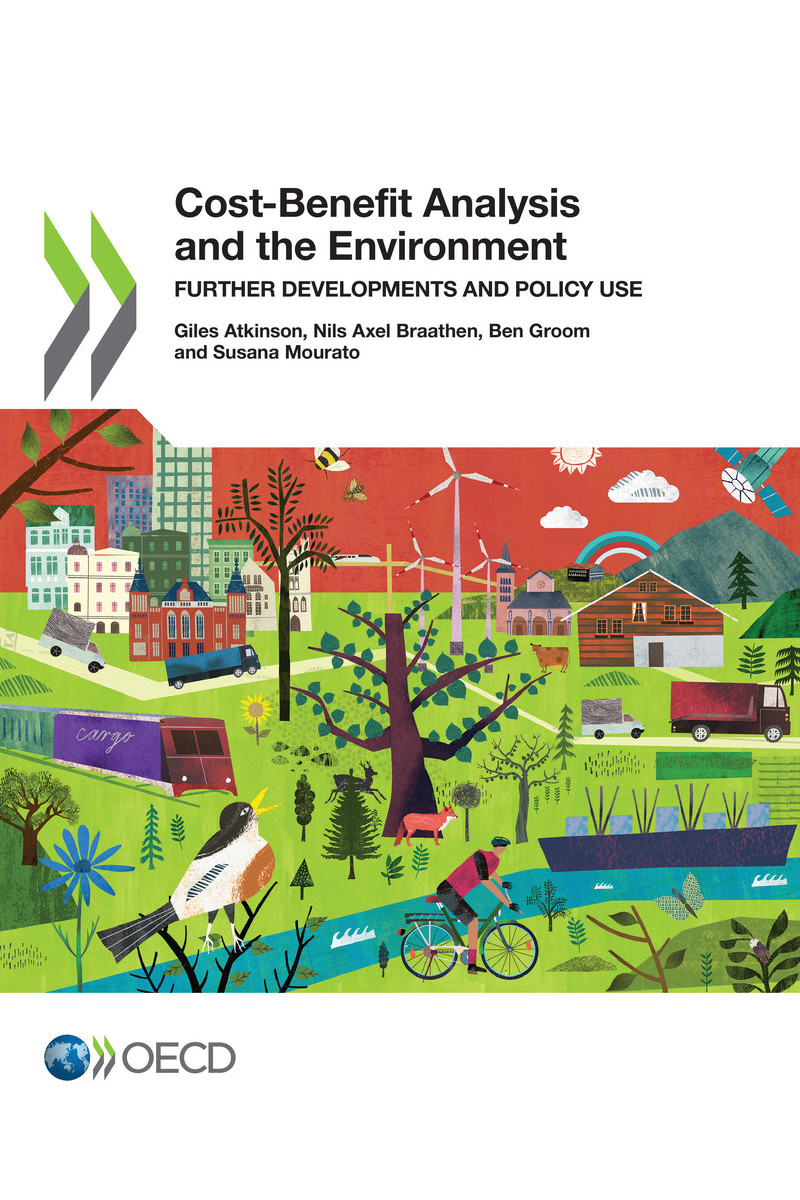
OECD (2018), Cost-Benefit Analysis and the Environment: Further Developments and Policy Use , OECD Publishing, Paris.
http://dx.doi.org/10.1787/9789264085169-en
Cost-benefit analysis has long been a core tool of public policy. The systematic process of calculating the benefits and costs of policy options and projects is now widely regarded as an essential step in the policy process. It helps decision makers to have a clear picture of ho society would fare under a range of policy options for achieving particular goals. This is particularly the case for the development of environmental policy, where cost-benefit analysis is central to the design and implementation of policies in many countries.
The OECD has a long tradition of promoting the use of cost-benefit analysis in environmental policy development. This work has covered a wide range of topics, from the evaluation of environmental damages in monetary terms to the role of discounting to case studies of the application of cost-benefit analysis. The 2006 OECD publication on Cost-Benefit Analysis and the Environment: Recent Developments has been a reference publication for more than a decade.
This report, Cost-Benefit Analysis and the Environment: Further Developments and Policy Use , provides a timely update on recent developments in the theory and practice of cost-benefit analysis. Many important theoretical developments have taken place over the last decade, not least in relation to the economics of climate change and to the treatment of uncertainty and discounting in policy or project assessments. For example, increasing attention has been devoted to assessing the social costs of carbon (SCC). Since carbon emissions have global impacts that vary across time and space and occur in many different sectors, the calculation of the SCC is complex, requiring inputs from many different disciplines. This book explains the underpinnings of the SCC and reviews the different approaches and uncertainties in its estimation, addressing key questions that will influence the policy relevance of such calculations: What path will emissions take? How will emissions affect temperatures? How will temperature changes cause damages?
The report also updates the technical and practical developments in the key issue of discounting. While the theory of social discounting shows clearly how the social discount rate should be defined, in practice numerous questions arise, especially when considering actions with implications for generations in the far distant future: intergenerational projects and policies. In such contexts, there is strengthening theoretical and empirical support for the use of discount rates that decline with time. But this has important implications for the policy debate around major environmental issues such as climate change, air pollution and water management.
The book presents new information on the current use or lack of use of cost-benefit analysis in different ex ante and ex post contexts. There are large variations in the extent to which cost-benefit analysis is being used in environmental policy development across countries. There are also wide differences in the extent to which various environmental impacts are being taken into account in these analyses, across economic sectors and across analytical contexts. For example, in general, energy sector investments and policy proposals are relatively well covered in cost-benefit analyses. But there is often far narrower coverage of non-climate environmental impacts in those assessments than in assessments of investment projects in, for example, the transport sector.
The political economy dimensions of the use of cost-benefit analysis are also explored in the book. While cost-benefit analysis provides extremely valuable information for decision-makers, it necessarily forms just one part of the complex set of considerations that must be taken into account when dealing with challenging environmental issues. How cost-benefit analysis is used in practice, and the constraints and challenges in this use, is critical to ensuring that decision makers have a full understanding of the use and abuse of cost-benefit analysis. Clearly, providing decision makers with the flexibility needed in order to "act politically" or meet other policy objectives is essential. But this will shape the nature of the use of cost-benefit analysis in particular ways. Throughout this, the role of CBA remains one of explaining how a decision should look if an economic approach is adopted.
This book is the result of a strong collaboration between leading academics and the OECD countries, working under the auspices of the OECDs Environment Policy Committee. We stand ready to support countries in the implementation of the practices and tools detailed in this study. I am confident that this work will significantly enrich the understanding of cost-benefit analysis and strengthen its use in both OECD and non-OECD countries in tackling our many shared environmental challenges.

Anthony Cox
Acting Director, OECD Environment Directorate
This book is an update of the 2006 book on Cost-Benefit Analysis and the Environment: Recent Developments (Pearce et al., 2006). It has been written by Giles Atkinson, Ben Groom and Susana Mourato of London School of Economics (LSE) and Nils Axel Braathen of the OECD Secretariat. It has benefitted from numerous comments and suggestions provided by Delegates to the Working Party on Integrating Environmental and Economic Policies under OECDs Environment Policy Committee.
Font size:
Interval:
Bookmark:
Similar books «Cost-benefit analysis and the environment : further developments and policy use»
Look at similar books to Cost-benefit analysis and the environment : further developments and policy use. We have selected literature similar in name and meaning in the hope of providing readers with more options to find new, interesting, not yet read works.
Discussion, reviews of the book Cost-benefit analysis and the environment : further developments and policy use and just readers' own opinions. Leave your comments, write what you think about the work, its meaning or the main characters. Specify what exactly you liked and what you didn't like, and why you think so.

